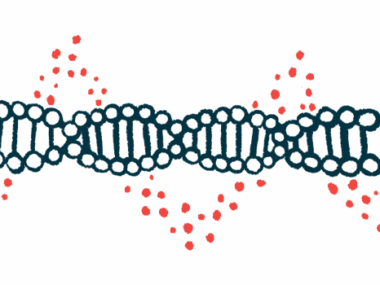Heart protein may be target against Dravet syndrome sudden death
Reducing NaV1.6 normalized sodium flow, led to lower death rates in mice
Written by |

Targeting a heart protein called NaV1.6 may help prevent sudden death in adults with Dravet syndrome, a study in mice suggests.
The study, “Cardiac-Specific Deletion of Scn8a Mitigates Dravet Syndrome-Associated Sudden Death in Adults,” was published in JACC: Clinical Electrophysiology.
Dravet syndrome is caused by mutations in the gene that provides instructions to make a protein that forms a subunit of a sodium channel called NaV1.1. This channel lets sodium ions — which are are a type of salt molecule, one half of sodium chloride or table salt — pass into and out of cells.
The movement of sodium ions into and out of cells is crucial to the electrical activity of nerves. Within the brain, a deficiency of NaV1.1 is thought to impair neuronal activity, which leads to the seizures in Dravet syndrome.
Most Dravet research focuses on the brain, but NaV1.1 isn’t expressed only in the brain; it’s also present in heart cells. The flow of sodium and other salt molecules into and out of heart cells helps them contract, allowing the heart to pump blood.
Normalizing sodium flow
But the lack of NaV1.1 doesn’t result in reduced sodium flow in the heart of Dravet patients. It’s actually higher than normal. Researchers think this abnormally high sodium flow could lead to abnormal heartbeats, called arrythmias, which may contribute to sudden unexpected death in epilepsy (SUDEP), a fatal seizure complication whose causes aren’t fully understood.
If it’s true that abnormal sodium flow contributes to SUDEP in Dravet syndrome, then it follows that normalizing sodium flow could help reduce the risk of this deadly outcome. The molecular reasons for the increased sodium flow aren’t clear, however, making it impossible to design treatment strategies to normalize it.
Here, researchers found through experiments with mouse models that the increased sodium flow in the heart of Dravet patients is largely due to a different sodium channel protein, called NaV1.6, becoming overactive when the heart lacks NaV1.1, its normal protein.
“Ultimately, NaV1.6 remodeling predisposes the animal to arrhythmia development and sudden death,” wrote the researchers, who showed that reducing NaV1.6 levels normalized sodium flow and led to a decrease in rates of sudden death among the mice. This reduction in death was only seen in adult mice, however. Reducing NaV1.6 didn’t affect rates of sudden death in younger mice.
In their experiments, the scientists used genetic engineering to reduce NaV1.6 levels, which isn’t applicable to people, but the findings support the idea that targeting NaV1.6 with medications to reduce its activity might help lower the risk of SUDEP in adults, they said.
“These results highlight cardiac NaV1.6 as a potential therapeutic target for preventing sudden death in” Dravet syndrome, the scientists wrote.







